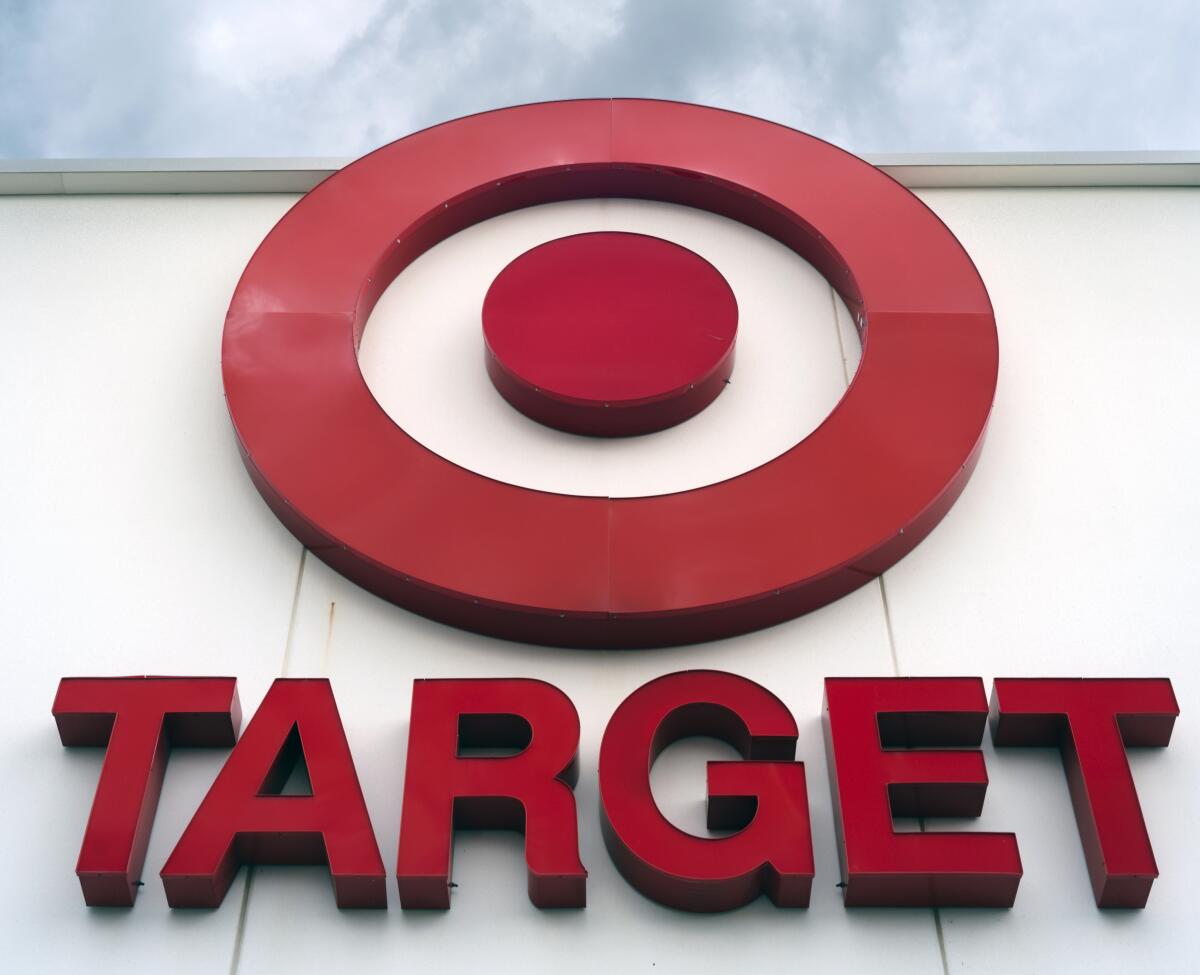Inflation is hammering Target, leading to worst single-day sell-off since 1987

- Share via
The pandemic vastly changed the way Americans spend money, and now as they return to pre-pandemic behavior, they’re tripping up retailers again.
That dynamic has only been intensified in recent months as inflation jumps sharply, and the latest financial report from Target underscores the challenges.
Target reported Wednesday that its profit tumbled 52% compared with the same period last year in an environment of rising costs for fuel and also a lightning quick return by consumers to more normalized spending. Purchases of big TVs and appliances that Americans loaded up on during the pandemic have faded, leaving Target with a bloated inventory that must be marked down to sell.
Target’s quarterly financial report comes a day after shares of rival Walmart tumbled about 17% for similar reasons after it posted quarterly results. Both companies missed profit expectations by a wide margin. Shares of Walmart fell an additional 8% on Wednesday.
Shares of Target Corp. closed Wednesday down 25%, the biggest one-day sell-off since the Black Monday market crash of 1987.
The financial app Dave promises its customers freedom from expensive bank overdrafts. But for almost all of its users, its services are hardly free.
What hasn’t changed is the willingness of Americans to spend, even with inflation hovering near four-decade highs. Target said that revenue rose 4% to $24.83 billion in its most recent quarter, which was a little better than expected.
Big retailers became a lifeline during the pandemic, with millions of people splurging on food to make at home, as well as on big-ticket electronics. The spending on groceries continues to be strong, but those sales are lower margin compared with those luxuries for the home. Consumers are also spending more on things such as luggage as they begin to travel again.
Yet even though consumer spending continues to be strong, costs are rising for major retailers.
“Things have changed significantly from even 13 weeks ago,” Chief Executive Brian Cornell said. “We did not project, I did not project, the kind of significant increases we would see in freight and transportation costs.”
That is hitting the bottom line of companies that have prospered over the last two years.
Target reported Wednesday that first-quarter net income tumbled to $1.01 billion, or $2.16 per share, in the quarter that ended April 30. Per-share earnings adjusted for one-time costs were $2.19, far from the $3.07 a share expected by industry analysts polled by FactSet.
And there does not appear to be a way around rising costs in the immediate future.
Those freight costs will be $1 billion higher this year than Target had anticipated, it said Wednesday, but the company also said it will work hard not to pass through the price increases to customers.
The behavioral change among American consumers is broad and has adversely affected companies that logged massive profits during the last two years.
Laura Veldkamp, a finance professor at Columbia University, says the constant “yo-yo of demand” has also contributed to pushing inflation higher because it has made it harder for businesses to plan.
As a result, a shifting mix of goods ends up in short supply, which pushes up their prices as demand unexpectedly jumps.
“This roller coaster ride that we’re on where everybody wants bicycles one day and then everybody wants to go out to a restaurant once we feel safe just has created such a chaos,” Veldkamp said. “This kind of volatility really does drive up the cost of doing business.”
Amazon reported its first quarterly loss since 2015 last month, stalled by a slowdown in pandemic-induced online shopping, in addition to a huge write-down of its investment in an electric-vehicle startup.
At Walmart, higher labor and fuel costs as well as higher inventory levels dragged down the company’s profit. Walmart said customers spent on food and other basic consumer goods, shifting away from discretionary items that had previously added to its bottom line.
That both Walmart and Target have pushed heavily into groceries is a plus with spending still heavy there, said Neil Saunders, managing director at GlobalData Retail.
Yet the same things that enabled Target to thrive in recent years, successfully stimulating impulse buys of discretionary goods, was a negative to start the year.
“As consumers become more cautious, the ‘Target effect’ of spending hundreds of dollars on a mission that originally involved picking up a tube of toothpaste could fade fast,” Saunders said.
That appeared to be the sentiment Wednesday on Wall Street, with Target’s shares sliding $53.67 to $161.61.
The last time Target shares fell so hard was on Oct. 19, 1987, one of the worst days in history for U.S. markets, when the Dow fell more than 20%. However, Target shares then cost less than $4.
Other pandemic metrics are being upended.
Sales at Target stores open at least a year increased 3.4% during the latest quarter. It posted an 18% increase in the same quarter last year. Online sales increased 3.2%, down from growth of 50.2% a year earlier.
More to Read
Inside the business of entertainment
The Wide Shot brings you news, analysis and insights on everything from streaming wars to production — and what it all means for the future.
You may occasionally receive promotional content from the Los Angeles Times.











